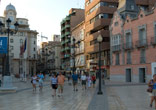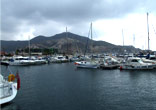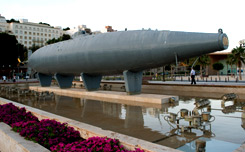




The first settlement founded in the natural harbour of Cartagena was constructed in 223 BC by the Carthaginians, who called it Quart Hadas (New City). After conquering the city in 209 BC the Romans called it Carthago Nova (New Carthage) Although the city declined in importance in the middle ages, its prestige increased in the 18th century when it became a major naval base. Cartagena has several archaeological remains including a Roman amphitheatre. (Teatro Romano) which is in the process of being excavated and is considered one of the most important Roman remains in Spain.
Other places of interest within Cartagena include the Church of Santa Maria La Vieja, the Torre Ciega, Torres Park and the Castle de la Concepcion. One of the prettiest areas in the city is its port, where you can find the Modernist Town Hall, several monuments, such as the one dedicated to the Heroes of Cavite and Santiago de Cuba and the First submarine in the world ever to be launched,the latter being the work of Isaac Pearl in 1888. Before leaving Cartagena do not forget to visit the Archeological Museums.
The port city has a marina and a great deal of money is being invested restoring the beautiful buildings. The waterfront has been completely rebuilt with several restaurants and bars. Cartagena is a working port and still a naval base and is very proud of it’s history. During September there is a major Fiesta where residents dress as Romans and Carthaginians and party well into the early hours. A large section of the shopping area has been pedestrianised and there also department stores, streetside cafes, restaurants, bars and 2 large hypermarkets located on the edges of the city.
Cartagena has so much to see and do. A good starting place is the harbour front and the new promenade which offers easy parking for an exploration of the old town.